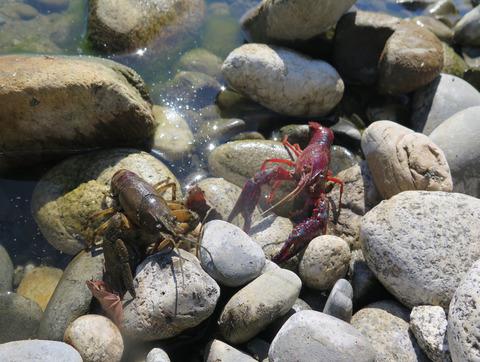当前位置:
X-MOL 学术
›
J. Appl. Ecol.
›
论文详情
Our official English website, www.x-mol.net, welcomes your
feedback! (Note: you will need to create a separate account there.)
Inference of local invasion pathways in two invasive crayfish species displaying contrasting genetic patterns
Journal of Applied Ecology ( IF 5.0 ) Pub Date : 2021-09-08 , DOI: 10.1111/1365-2664.14023 Ivan Paz‐Vinas 1 , Iris Lang 1 , Paul Millet 1 , Charlotte Veyssière 1 , Géraldine Loot 1, 2 , Julien Cucherousset 1
中文翻译:

推断两种具有对比遗传模式的入侵小龙虾物种的局部入侵途径
更新日期:2021-09-08
Journal of Applied Ecology ( IF 5.0 ) Pub Date : 2021-09-08 , DOI: 10.1111/1365-2664.14023 Ivan Paz‐Vinas 1 , Iris Lang 1 , Paul Millet 1 , Charlotte Veyssière 1 , Géraldine Loot 1, 2 , Julien Cucherousset 1
Affiliation

|
- The efficient management of invasive alien species (IAS) requires the identification of their introduction pathways. Genetic assessments have proven useful to inform invasion pathways at large (national to worldwide) scales, but studies at local scales are still rare, despite their importance for guiding management.
- In this study, genetic analyses were used to identify local invasion pathways of two invasive crayfish species (the spiny-cheek crayfish Faxonius limosus and the red swamp crayfish Procambarus clarkii) in a dense network of artificial lakes. We first characterized the spatial patterns of genetic variability, effective population sizes (Ne) and among-lakes recent migration events for each species using neutral microsatellite markers. We then identified the environmental factors affecting genetic variability and inferred the potential local invasion pathways.
- Results revealed different patterns of genetic variability between the two species: F. limosus displayed very low levels of genetic diversity, Ne and spatial structuring compared to P. clarkii, which displayed high genetic diversity, Ne and spatial genetic structuring. We also demonstrated context-dependent effects of different environmental factors (fishery management, spatial distribution and lake size) on genetic variability indices.
- We did not identify local invasion pathways for F. limosus due to limited genetic variability, likely caused by a strong founder effect and potential parthenogenetic reproduction. Contrastingly, multiple invasion pathways (release, contaminant, unaided/corridor spread and stowaway) were identified for P. clarkii.
- Synthesis and applications. Although limited in some particular cases (e.g. for species having experienced strong shaping events and/or displaying asexual reproductive modes), neutral genetic variation assessments can provide important insights for inferring local invasion pathways in complex landscapes for invasive alien species displaying short generation times and complex invasion histories.
中文翻译:

推断两种具有对比遗传模式的入侵小龙虾物种的局部入侵途径
- 外来入侵物种 (IAS) 的有效管理需要确定其引入途径。遗传评估已被证明有助于在大范围(国家到全球)范围内为入侵途径提供信息,但在局部范围内进行的研究仍然很少,尽管它们对指导管理很重要。
- 在这项研究中,遗传分析被用于确定人工湖密集网络中两种入侵小龙虾物种(多刺小龙虾Faxonius limosus和红色沼泽小龙虾Procambarus clarkii)的局部入侵途径。我们首先使用中性微卫星标记表征了每个物种的遗传变异性、有效种群大小 ( Ne ) 和湖间最近迁移事件的空间模式。然后,我们确定了影响遗传变异性的环境因素并推断了潜在的局部入侵途径。
- 结果揭示了两个物种之间不同的遗传变异模式:F . 与表现出高遗传多样性、Ne和空间遗传结构的P. clarkii相比,limosus显示出非常低水平的遗传多样性、Ne和空间结构。我们还证明了不同环境因素(渔业管理、空间分布和湖泊大小)对遗传变异指数的上下文相关影响。
- 由于有限的遗传变异性,我们没有确定F. limosus 的局部入侵途径,这可能是由强大的创始人效应和潜在的孤雌生殖引起的。相比之下,对P. clarkii确定了多种入侵途径(释放、污染物、独立/走廊传播和偷渡)。
- 合成与应用。尽管在某些特定情况下受到限制(例如对于经历过强烈塑造事件和/或表现出无性繁殖模式的物种),中性遗传变异评估可以为推断复杂景观中的局部入侵途径提供重要的见解,以推断外来入侵物种的短代和复杂入侵历史。











































 京公网安备 11010802027423号
京公网安备 11010802027423号